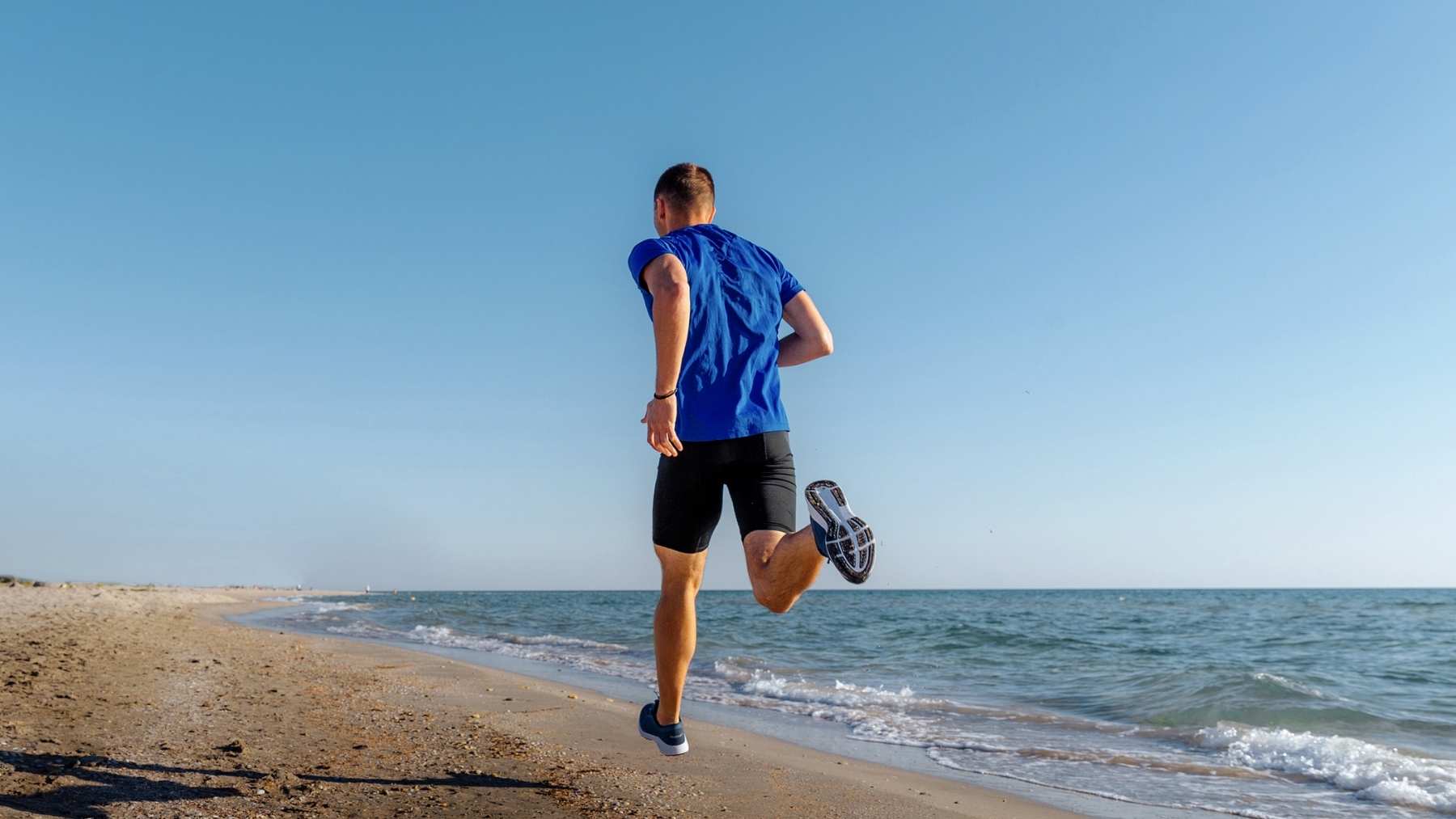Touching your toes is a common yardstick for flexibility. It’s a handy method to gauge how supple your hamstrings are and how well your spine can move.
And according to mobility coach Roger Frampton, it’s also a useful way to screen for potential kinetic chain issues in the hamstrings and back that could lead to injury down the road.
“Touching your toes is a position everyone should just have,” the founder of The Frampton Method tells Fit&Well.
“You should be able to fold your body in half the same way you should be able to sit in a deep squat position. I wouldn’t say that if you can’t touch your toes it’s bad, you’ve probably just become tight in that area—or strong in that area.”
For example, he explains that if you do a lot of running, you’re going to be using your hamstrings a lot.
“A consequence of that is limited range of motion. But you might be really good at running. Your hamstrings have become tight for a purpose: to make you more springy when you run.”
Why it’s worth being able to touch your toes
So why is learning to touch your toes—and improving the flexibility of your hamstrings—a worthwhile endeavor?
Having tight hamstrings can lead to back pain, according to Frampton, along with other issues.
“If you start to feel stiffness and discomfort further up the kinetic chain [the interconnected muscles, joints and bones in your back body], and your ability to touch your toes is lacking, that’s when trying to develop this flexibility can help.”
How to measure flexibility
“Instead of saying ‘I can’t touch my toes’, measure what you actually can do,” Frampton advises.
In one video on his Instagram page, he demonstrates how you can bend over and use a chair, blocks, a Wellington boot, and even a pet dog to measure flexibility.
“It doesn’t really matter what you use, as long as it’s an exact measure,” he says.
To practice touching your toes safely, while also establishing a baseline for how flexible you are, Frampton says there are three rules to follow:
- Keep your feet together, facing forwards.
- Legs must stay straight.
- And the toe touching test must be done first thing in the morning without any training.
How to learn to touch your toes
Next up, is the training. First, Frampton recommends learning to hinge safely with a flat back fold.
“This teaches you how to hinge your hips so you’re not just using your back to touch your toes,” he says.
To learn proper hinge mechanics, Frampton suggests holding a broomstick handle against your back, then folding forward without letting the handle come away from the base of your lower back or back of your head. “You don’t even have to fold that far,” he says.
Now practice folding forward fully. “Folding is half hamstrings, half spine. You are stretching your hamstrings, but because you’re folding, you’re doing most of the moving through your spine.”
If you’re struggling to touch your toes, Frampton swears by a 30-second technique you can try while waiting for your kettle to boil.
Here’s how it works:
Sets: 3 Timing: 30 seconds
- Pull up your trousers and mark on your leg where you can reach down to.
- Next sit on the floor with your legs straight, push your knees down with your hands and try to get your heels off the floor.
- If you can’t lift your heels, place a book under your knees and you’ll find it’s easier.
- Reach forward as far as you can and hold this position for 30 seconds.
- After half a minute, stand up and try to touch your toes, marking how far you can reach.
“Hopefully you’ve got a lower mark,” says Frampton.
Do three sets of 30 seconds every day and incorporate this drill into daily mobility training.
Then, once a month, keep retesting as you work your way to getting closer to touching your toes.





